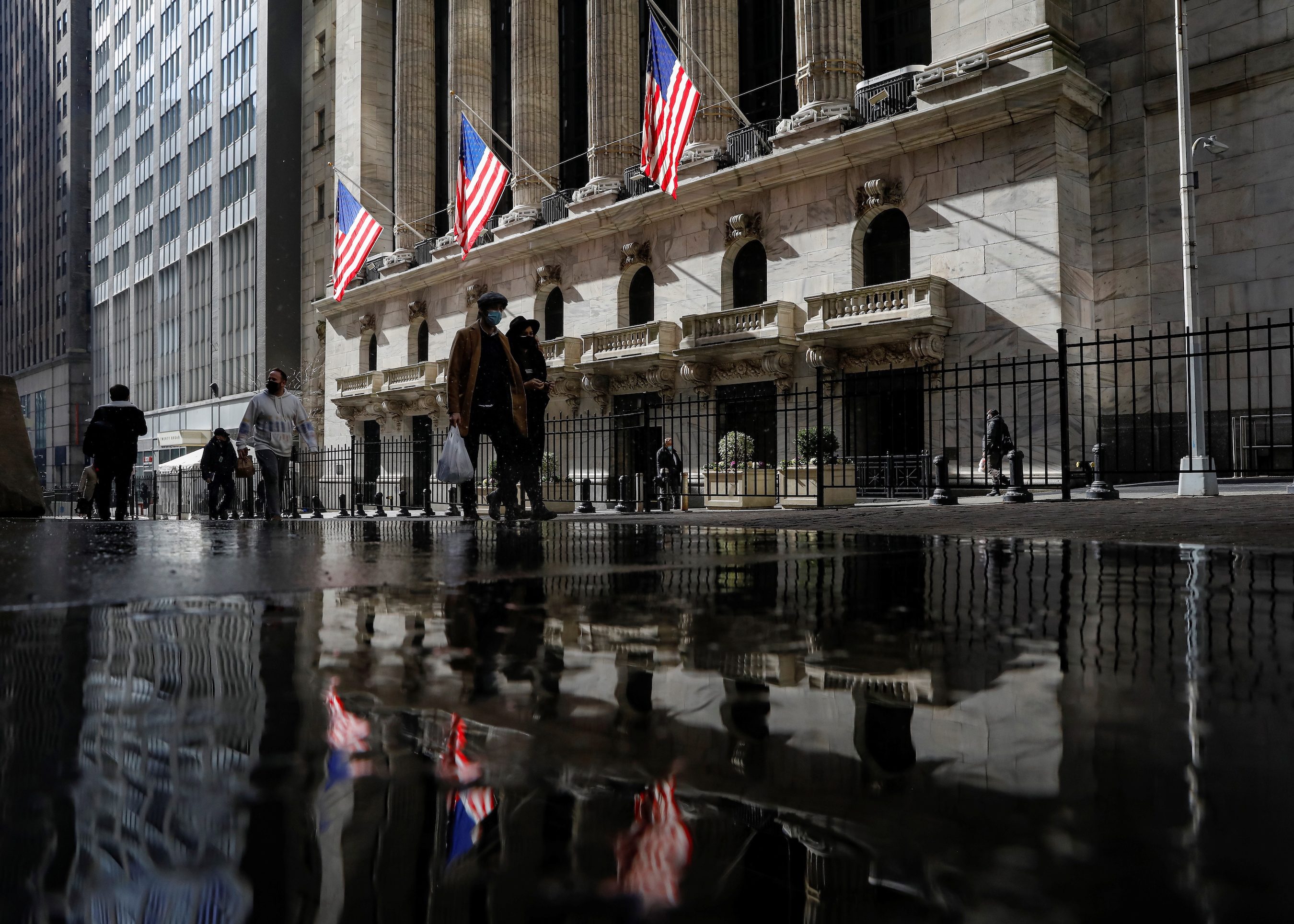SUMMARY
This is AI generated summarization, which may have errors. For context, always refer to the full article.

A gauge of global equity markets fell for a 3rd straight session on Thursday, February 18, dragged lower by weakness on Wall Street on views the market has climbed too high too soon, while a rise in weekly jobless claims pointed to a fragile recovery in the United States labor market.
Investors took profits on technology shares and other segments that have risen sharply.
Oil prices erased early gains, with Brent retreating from a 13-month high above $65 a barrel as buying spurred by concerns that a rare cold snap in Texas could disrupt US crude output for days or even weeks petered out.
The MSCI’s global stock index fell 0.52% to 679.13. The index touched a record intra-day high of 687.26 on Tuesday, February 16, before erasing gains to snap an 11-day winning streak.
Investors’ appetite for riskier assets dulled after data showed the number of Americans filing first-time applications for unemployment benefits unexpectedly rose last week, even though the labor market is steadily recovering as additional fiscal stimulus and falling COVID-19 cases allow more service businesses to reopen.
On Wall Street, main indexes fell as investors resumed a shift out of big technology-related firms.
Strong earnings, progress in the vaccination rollout, and hopes of a $1.9-trillion federal stimulus package helped US stock indexes hit record highs again at the start of the week.
But the months-long rally suggests stocks now have high valuations, said Jason Pride, chief investment officer for private wealth at Glenmede in Philadelphia.
“We are still in the cautiously bullish environment for the market on the whole,” Pride said, citing two reasons.
“We’re going to get a vaccine-induced economic recovery, that’s No. 1. The flip side of that story is the markets have largely priced that in and driven themselves to overvalued territory. Markets are going to struggle with that,” he said.
The Dow Jones Industrial Average fell 119.68 points, or 0.38%, to finish at 31,493.34, the S&P 500 lost 17.36 points, or 0.44%, to end at 3,913.97, and the Nasdaq Composite dropped 100.14 points, or 0.72%, to close at 13,865.36.
European stocks fell after a clutch of disappointing earnings reports from companies including Airbus and Orange. The pan-European STOXX 600 index closed down 0.82%.
US Treasury yields were mixed across the curve on Thursday, as the market adjusted to higher levels on the longer end of the curve that were reached this week on expectations of extended fiscal and monetary stimulus and signs of an economic upswing.
“Clearly, bond markets are thinking the world economy can normalize and yields can come off emergency levels. They are moving away from only thinking of COVID and QE (quantitative easing) and are thinking about normalization,” said April LaRusse, head of fixed income investment specialists at asset manager Insight Investment.
“But while that will be the general trend, we do think markets may have got a bit ahead of themselves,” LaRusse said.
The benchmark 10-year yield, which touched 1.333% on Wednesday, February 17, its highest level since February 27, 2020, was last down a basis point at 1.2872%.
The dollar lost ground, ending its first two-day winning streak in two weeks as disappointing labor market data tempered expectations for a speedy economic recovery from the global health crisis. The dollar index was off 0.3%.
Bitcoin eased off its record high of $52,640 reached overnight.
Brent crude futures settled at $63.93 a barrel, down 41 cents or 0.64%, while US crude oil futures settled at $60.52 a barrel, down 62 cents, or 1.01%.
Copper surged nearly 3% to its highest since April 2012 as Chinese investors returning from a weeklong holiday added impetus to a rally that has almost doubled prices from lows last March, when coronavirus worries peaked.
Spot gold was down 0.02% at $1,775.8667 an ounce. – Rappler.com
Add a comment
How does this make you feel?
There are no comments yet. Add your comment to start the conversation.